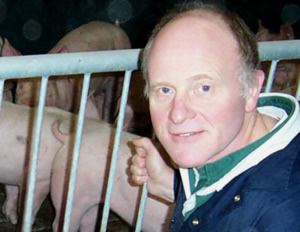 Many pig producers are missing out on a simple way to improve performance and profits. Its been shown that they could boost pig performance, enhance the health status of their herds and save money at the same time, simply by replacing their ventilation controls, says Hugh Crabtree, managing director of Reading-based Farmex.
Many pig producers are missing out on a simple way to improve performance and profits. Its been shown that they could boost pig performance, enhance the health status of their herds and save money at the same time, simply by replacing their ventilation controls, says Hugh Crabtree, managing director of Reading-based Farmex.“It is not uncommon to find controllers that are more than 15 years old. Typically, older controllers are located inside the piggery which means that components are much more likely to be corroded, worn out or simply not working properly,” he commented. “Analogue controls have been superseded by digital or micro-controllers, but the current generation of digital controllers is more accurate, more flexible and are easily upgraded.”
In the farrowing and nursery accommodation energy costs can nearly always be reduced providing a healthy return on investment. Farrowing rooms give a 100 per cent return on investment in a year on electricity savings alone and nurseries 70 per cent — through better control while in the grower and finishing houses improved temperature regulation results in improved feed conversion and growth rates. An improvement in respiratory health would also be expected if they old system allowed wide temperature fluctuations.
 |
| Hugh Crabtree says better environmental control has a rapid payback |
In a really old building complete refurbishment would be ideal but there are many perfectly good buildings with ventilation systems that are not working very well or even not working at all,” said Mr Crabtree.
But huge improvements can be made even in older buildings by better control of old fans and heating/ventilation systems. “Generally, it’s the controller — and its operator — that determines how efficient the system is,” he points out.
Some pig farmers, particularly older ones, are reluctant to make major investments but better control has a rapid payback. Tax-wise, controller upgrade and replacement can be accounted for as ‘repairs and renewals and is 100 per cent allowable in the current tax year. “If profits are being made, it’s far better to get the tax man to pay for these improvements and enjoy the production benefits thereafter,” said Mr Crabtree. The cost of replacing controllers is likely to be £500-£750 per controlled space, which can contain 500 or more pigs.
Farmex



